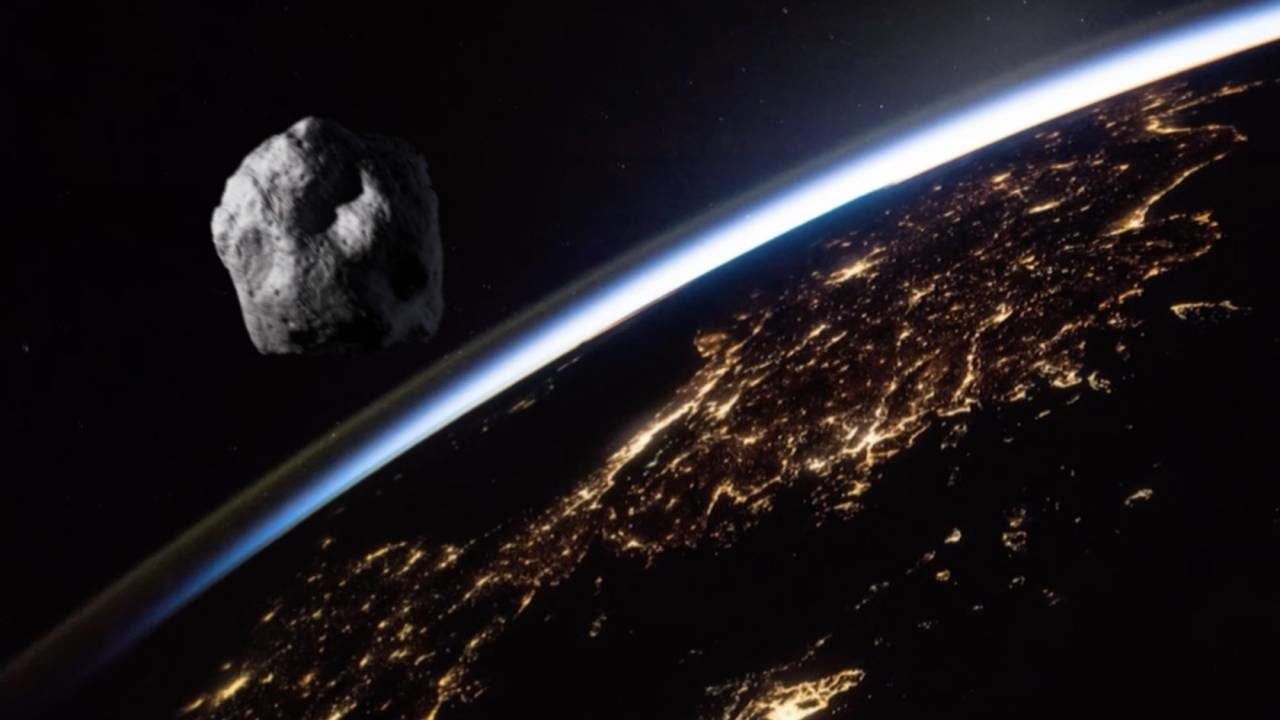A fitting name, astronomers reasoned, for a menace now hurtling towards Earth from outerspace. Scientists are monitoring the progress of a 390-metre wide asteroid discovered last year that is potentially on a collision course with the planet, and are imploring governments to decide on a strategy for dealing with it.
Nasa has estimated that an impact from Apophis, which has an outside chance of hitting the Earth in 2036, would release more than 100,000 times the energy released in the nuclear blast over Hiroshima. Thousands of square kilometres would be directly affected by the blast but the whole of the Earth would see the effects of the dust released into the atmosphere.
And, scientists insist, there is actually very little time left to decide. At a recent meeting of experts in near-Earth objects (NEOs) in London, scientists said it could take decades to design, test and build the required technology to deflect the asteroid. Monica Grady, an expert in meteorites at the Open University, said:
"It's a question of when, not if, a near Earth object collides with Earth. Many of the smaller objects break up when they reach the Earth's atmosphere and have no impact. However, a NEO larger than 1km [wide] will collide with Earth every few hundred thousand years and a NEO larger than 6km, which could cause mass extinction, will collide with Earth every hundred million years. We are overdue for a big one."Apophis had been intermittently tracked since its discovery in June last year but, in December, it started causing serious concern. Projecting the orbit of the asteroid into the future, astronomers had calculated that the odds of it hitting the Earth in 2029 were alarming. As more observations came in, the odds got higher.
Having more than 20 years warning of potential impact might seem plenty of time. But, at last week's meeting, Andrea Carusi, president of the Spaceguard Foundation, said that the time for governments to make decisions on what to do was now, to give scientists time to prepare mitigation missions. At the peak of concern, Apophis asteroid was placed at four out of 10 on the Torino scale - a measure of the threat posed by an NEO where 10 is a certain collision which could cause a global catastrophe. This was the highest of any asteroid in recorded history and it had a 1 in 37 chance of hitting the Earth. The threat of a collision in 2029 was eventually ruled out at the end of last year.
Alan Fitzsimmons, an astronomer from Queen's University Belfast, said: "When it does pass close to us on April 13 2029, the Earth will deflect it and change its orbit. There's a small possibility that if it passes through a particular point in space, the so-called keyhole, the Earth's gravity will change things so that when it comes back around again in 2036, it will collide with us." The chance of Apophis passing through the keyhole, a 600-metre patch of space, is 1 in 5,500, based on current information.
There is no shortage of ideas on how to deflect asteroids. The Advanced Concepts Team at the European Space Agency have led the effort in designing a range of satellites and rockets to nudge asteroids on a collision course for Earth into a different orbit.
No technology has been left unconsidered, even potentially dangerous ideas such as nuclear powered spacecraft. "The advantage of nuclear propulsion is a lot of power," said Prof Fitzsimmons. "The negative thing is that... we haven't done it yet. Whereas with solar electric propulsion, there are several spacecraft now that do use this technology so we're fairly confident it would work."
The favoured method is also potentially the easiest - throwing a spacecraft at an asteroid to change its direction. Esa plans to test this idea with its Don Quixote mission, where two satellites will be sent to an asteroid. One of them, Hidalgo, will collide with the asteroid at high speed while the other, Sancho, will measure the change in the object's orbit. Decisions on the actual design of these probes will be made in the coming months, with launch expected some time in the next decade.
One idea that seems to have no support from astronomers is the use of explosives.
Prof Fitzsimmons. "If you explode too close to impact, perhaps you'll get hit by several fragments rather than one, so you spread out the area of damage."
In September, scientists at Strathclyde and Glasgow universities began computer simulations to work out the feasibility of changing the directions of asteroids on a collision course for Earth. In spring next year, there will be another opportunity for radar observations of Apophis that will help astronomers work out possible future orbits of the asteroid more accurately.
If, at that stage, they cannot rule out an impact with Earth in 2036, the next chance to make better observations will not be until 2013. Nasa has argued that a final decision on what to do about Apophis will have to be made at that stage.
"It may be a decision in 2013 whether or not to go ahead with a full-blown mitigation mission, but we need to start planning it before 2013," said Prof Fitzsimmons. In 2029, astronomers will know for sure if Apophis will pose a threat in 2036. If the worst-case scenarios turn out to be true and the Earth is not prepared, it will be too late. "If we wait until 2029, it would seem unlikely that you'd be able to do anything about 2036," said Mr Yates.




Comment: 15 years later, they're still reporting about Apophis as if it's breaking news.
As we said at the time...